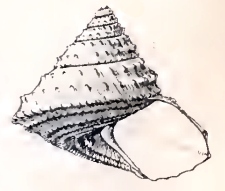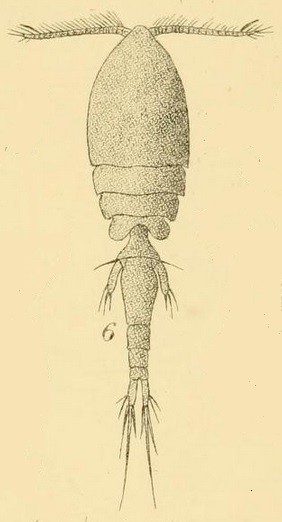Related Research Articles

The Fauna of British India with long titles including The Fauna of British India, Including Ceylon and Burma, and The Fauna of British India Including the Remainder of the Oriental Region is a series of scientific books that was published by the British government in India and printed by Taylor and Francis of London. The series was started sometime in 1881 after a letter had been sent to the Secretary of State for India signed by Charles Darwin, Sir Joseph Dalton Hooker and other "eminent men of science" forwarded by P.L.Sclater to R.H. Hobart. W. T. Blanford was appointed editor and began work on the volume on mammals.

Bardet–Biedl syndrome (BBS) is a ciliopathic human genetic disorder that produces many effects and affects many body systems. It is characterized by rod/cone dystrophy, polydactyly, central obesity, hypogonadism, and kidney dysfunction in some cases. Historically, slower mental processing has also been considered a principal symptom but is now not regarded as such.

Caenorhabditis is a genus of nematodes which live in bacteria-rich environments like compost piles, decaying dead animals and rotting fruit. The name comes from Greek: caeno- ; rhabditis = rod-like. In 1900, Maupas initially named the species Rhabditis elegans, Osche placed it in the subgenus Caenorhabditis in 1952, and in 1955, Dougherty raised Caenorhabditis to the status of genus.

Agraulos Hawle & Corda 1847, is a genus of trilobites that lived during the Middle Cambrian in North America and Europe, particularly the Czech Republic.

Acontheus is a genus of trilobites belonging to the Family Corynexochidae, Order Corynexochida, and is geographically widespread having been recorded from middle Cambrian strata in Sweden, Newfoundland, Germany, Siberia, Antarctica, Queensland, China and Wales.

Okenia elegans, the yellow skirt slug, is a species of a sea slug, specifically a dorid nudibranch, a marine gastropod mollusc in the family Goniodorididae. It is the type species of its genus.

Calliotropis regalis, or the regal spiny margarite, is a species of sea snail, a marine gastropod mollusk in the family Eucyclidae.

Cahela is a monotypic snout moth genus described by Carl Heinrich in 1939. Its only species, Cahela ponderosella, the cahela moth, described by William Barnes and James Halliday McDunnough in 1918, is found in Mexico and in the US states of California, Texas, Arizona, Utah and probably Nevada.

Pleuroctenium Hawle & Corda (1847) is an agnostid trilobite belonging to the family Condylopygidae Raymond (1913). The genus occurs in Middle Cambrian (Drumian) strata of Canada, the Czech Republic, England and Wales, France, and Sweden.
Ph.D Ali A.F. AL-Furaih was a geology professor at King Saud University. Born in Bukayriyah, Saudi Arabia.
Mionochroma elegans is a species of beetle in the family Cerambycidae. It was described by Olivier in 1790. It is known from Guadeloupe, Grenada, Dominica, and St. Lucia.
The Hells Mouth Grits, formally defined and renamed the Hells Mouth Formation by Young et al., is a geological formation composed of Cambrian Greywackes in the south west part of St. Tudwal's Peninsula. Equivalent to the Rhinog Formation in the Harlech Dome, the grit beds exposed at St Tudwal's are very uniform in lithology and thickness when traced along the outcrops, with a gradual thinning southwards. They exhibit the characteristic textures and structures of greywackes but differ from the normal type in being relatively well sorted and commonly laminated. Intercalated mudstones are more variable both in thickness and in lithology and contain laminated mudstones rich in sponge remains. The sandstones have sharply defined bases, often bearing sole structures and occasionally loaded. Sandstone dykes cut down from the bases of some beds and extend through up to 0.6 m of underlying siltstones. The sandstones may form sheets up to 4 m thick, although a bed thickness of up to 1m is more usual, and have been interpreted as turbidites deposited by currents from the northeast.

Bailiaspis Resser, 1936, is a Middle Cambrian (Miaolingian) trilobite genus belonging to the Family Conocoryphidae Angelin, 1854. Within the Acado-Baltic region, the genus ranges from Wuliuan into Guzhangian age strata.
Chroomonas elegans is a species of cryptophytes. The type locality is Lake Neusiedl, at the Austria-Hungarian border.
Colpodes elegans is a species of ground beetles.

Collocheres elegans is a species of copepod in the family Asterocheridae. It is found in the British Isles and West Norway.
Corythodinium elegans is a species of dinoflagellates in the family Oxytoxaceae. It is found Worldwide. The type locality is the Mediterranean. It is also found in Australian and New Zealand waters.
Celastrinites is an extinct genus of prehistoric plants in the family Celastraceae. Celastrinites wardii is from the Cretaceous of British Columbia, Canada. C. elegans is from the Florissant fossil bed of Colorado.
Amphora elegans is a species of diatoms found in Europe.
Cleistosphaeridium is a genus of dinoflagellates in the order Gonyaulacales.